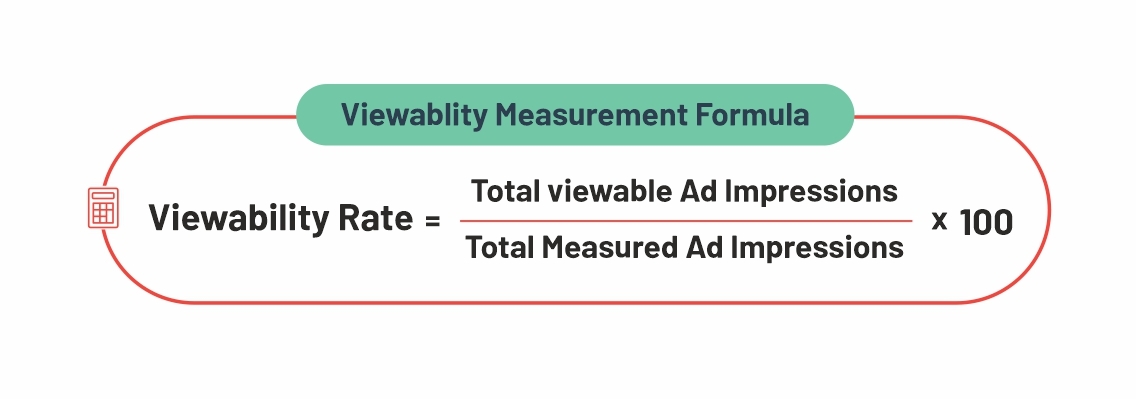What is Ad Viewability?
According to the IAB & Media Rating Council, the term ad viewability is the percentage of total ad impressions considered viewable if these two criteria are met.
- Display ads – At least for 1 second, 50% of the ad’s pixels are visible.
- Video ads – At least 2 seconds, 50% of the ad is visible.
Why should publishers care? Simple. To generate more revenue! If your ad space has a high viewability score, it will automatically be more valuable to advertisers. You are improving your authority to charge a better premium price for specific spots.
Table of Contents
- Do you know why Ads Lose Viewability?
- Here’s how you can improve your ad viewability
- How to Measure Ad Viewability?
- Viewability Measurement Formula:
- Why iion?
- What kind of high viewability ads should you pick?
- What’s Good About AdSuite?
Do you know why Ads Lose Viewability?
Ad viewability is a moderately new concept in digital advertising. Nevertheless, it has become a buzzword ever since. There are five main reasons why ads lose their viewability:
- Ad blockers used by users to avoid intrusive ads negatively impacts your viewability score
- Bot or Non-human Traffic may generate immersion, but the viewability score diminishes
- Poor placement of the ads
- The loading speed can increase the Bounce Rate
- Too High ATF or BTF (Above or Below-the-Fold) ad placement
Now, the question arises about improving ad viewability for the publishers. As there is such a high Return-on-Investment (ROI) associated with improved viewability, it’s in the best interest of publishers to prioritize the visibility of their ads.
Here’s how you can improve your ad viewability
- Correct ad placement by placing your ads above the fold (ATF)
- Optimizing your Ad Sizes to perform better on mobile and desktop
- Intensifying Page load speed
- Reduce Your Bounce Rate by figuring out why users leave your page without interacting with it
- Always consider Lazy Loading
- Consider the usage of Sticky Ads and go ahead with iion’s AdSuite
How to Measure Ad Viewability?
As mentioned earlier, the MRC (Media Rating Council) has a set of viewability definitions and standards for publishers and advertisers, respectively. Let’s have a quick recap on what it takes for an ad to be considered viewable:
- Display ads (Desktop) need a minimum of 50% of the ad view for at least 1 second
- Video ads (Desktop) need a minimum of 50% of pixels in view for at least 2 second
- Ad units (Desktop) need a minimum of 30% of pixels in view for at least 1 second
The MRC has also recommended the same viewability standards for mobile devices. Although viewability standards are persistently under advancement, there aren’t yet any reliable standards related to custom ad units for mobile ads.
Viewability Measurement Formula:

Why iion?
- Create Highly Visible Ad Units to Maximize Return for Advertiser and Publisher
- 80%+ Viewability – All ad units are outside of the regular ad slots and in highly visible places
- Incremental Ad revenue stream – unique new ad formats
- Sticky Ads – AdSuite units remain on the page when a user scrolls. It increases viewability and engagement
- Multi-Channel – AdSuite units work across desktop and mobile
What kind of high viewability ads should you pick?
- ScrollAd – High yielding non-intrusive ad-unit with Parallax feature
- HeadAd – A sticky header Ad-Unit with 90%+ viewability
- FootAd – A sticky footer Ad-Unit with 90%+ viewability
- ComboAd – Footad or HeadAd depending on the user’s scrolling direction
- InterAd – Fully Customizable Interstitial Ad with 100% Viewability
- PushAd – A drop down from top sticky Ad-Unit with 90%+ viewability
What’s Good About AdSuite?
- Incremental Revenue – Utilize unused ad positions
- Excellent User Experience – Non-intrusive ad formats
- Easy Implementation with One Tag – No need for site redesign
- Power of Prebid Demand- Maximize yield with bids from multiple SSPs
- Standard Formats – High fills because of numerous format supp
Recent Articles
What is Ad Fill Rate?
Introduction Modern-day websites are attractive digital constructs that relay pertinent information to the visitors while maximizing their user experience. The primary objective …
What is CPV?
Introduction Online advertising is a dynamic part of the digital world. Advertising comes in many shapes and forms yet always has to …
What is CPC?
Introduction Advertising is a prominent part of Digital Marketing. Whether you’re running your website or trying to increase your outreach on a social media platform,